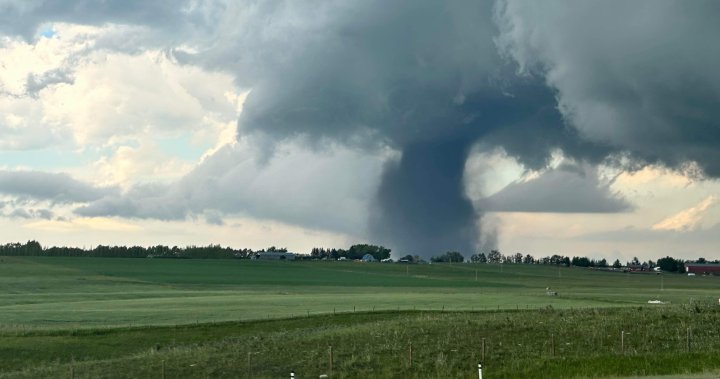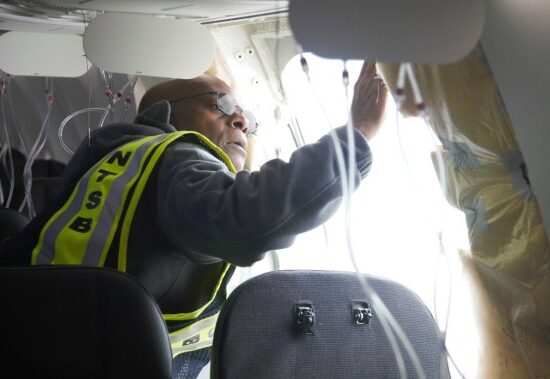
More than 100 homes were damaged on July 13 when a tornado touched down in the Ottawa suburb of Barrhaven with little to no warning, and in the aftermath, some storm experts say it’s a sign work is needed to better improve warning systems.
Currently, when inclement weather is forecast in the country, Environment and Climate Change Canada shares that information through its website, the WeatherCAN app, Weatherradio network, and over social media platforms. Commercial and public broadcasters like the Weather Network also amplify alerts through TV programming and its own mobile app.
And when severe weather is considered a “threat to life,” the alerts are broadcast on TV, radio, and wireless devices through the country’s Alert Ready system, with provinces and territories responsible for transmitting those alerts through their own alerting systems.
But David Sills with the Northern Tornadoes Project, which aims to assess Canada’s true climatology to improve the country’s models for tornado warnings and make homes more resilient for tornadoes, says the system is only as good as the information sent to it.
“We really need to make sure that the warnings are getting out earlier,” he told Global News.
“It’s very difficult with tornadoes. Tornadoes are very difficult to forecast, and usually the target lead time is only 10 minutes,” he added.
“We really need to get better at being able to use radar, use other tools to look at a thunderstorm and to be able to tell whether it’s going to product a tornado or not and give us more time to react.”
Similar alert systems are used south of the border in the U.S., but one that is not as commonly found in Canada are tornado sirens — something used frequently in tornado-prone areas of the U.S.

While each jurisdiction manages their sirens in terms of testing and use, with some not even using it at all in an entire year, many are standard in terms of the loudness with them sounding at about 120-130 decibels from 100 feet or 70 decibels from one mile away.
The sirens aren’t meant to be heard indoors, but Julie Stimson, director of Sedgwick County Emergency Management in Kansas, says they are useful and residents have proven that with their own comments on the system.
“Even though we don’t like it, a lot of folks will use it as that validation that this is real. The threat is here, it’s scary sirens that you don’t hear very often,” Stimson said. “So it definitely gets folks attention.”
She said in an interview with Global News that people also notice when a siren doesn’t go off, saying residents often reach out to find out why a warning siren did not sound despite bad weather.
Part of the reason, she said, is because the sirens have become almost ingrained in society after being used for decades.
“We’ve been using these sirens for decades, and so it’s just kind of a normal thing that our communities are used to hearing and understanding what that means,” Stimson said.
The systems aren’t without issue, though.
According to Stimson, the sirens can be costly to maintain and can bring up questions of the cost-to-benefit ratio, especially if a community never has to use the alarm due to few or no tornadoes in a single year.

In the town of Castle Rock, Colo., for example, officials estimate with each siren covering about one mile, a total of 34 would be needed at a cost of US$30,000 — amounting to US$1.02 million. That amount does not include annual maintenance and fees. Other cities, including Dallas, Texas, and Raleigh, N.C., estimate about the same amount, which is about $39,000 CAD.
“We know we have some years we don’t have any tornadoes. And then we have some years where we have multiple,” Stimson said.
“So it kind of averages that you’re spending a lot of money on a system that you may only use once or twice, you know. And so it’s that cost-benefit analysis that trips some folks up.”
It’s that cost that is why Sills says a focus should be put on technology already used in Canada and why Canadians likely won’t see a network of tornado sirens going up in the country anytime soon.
He said given those alarms are only focused on alerting those outside, where some may not hear it due to “music blaring on their earbuds,” it’s better to focus on what already exists: cell towers.
“Cell towers are the new tornado sirens,” he said.
“This is much more effective for Canada. I think the warning gets help from the government service, goes through the Alert Ready system and then uses our providers or cellphone providers to get right in your pocket and right in your hand. And it really can’t get much better than that. That’s inside or outside.
“I think we’re much better off trying to get a cellphone in everybody’s pocket.”
Whether sirens could be put in place would likely be up to municipalities, depending on where people live.
For example, Alberta Public Safety and Emergency Services said in a statement to Global News that its emergency management services are decentralized, with local authorities having the responsibility for managing how they respond.
“It would be up to a local community to install a tornado siren in those areas of the province where there is a higher risk of tornadoes,” a spokesperson said in an email.

Despite calls for work on Canada’s systems, they still are steadily improving.
The Northern Tornadoes Project, for example, issues report cards on its tornado warnings based on performance targets for Environment and Climate Change Canada (ECCC).
The report looks at the probability of detection for tornado warnings, whether an alert was issued at least 10 minutes before the event 60 per cent of the time, and if tornado watches were issued before successful warnings 80 per cent of the time.
Sills said between the 2019-2021 report and their most recent for 2022, ECCC improved from a failing to passing grade.
















